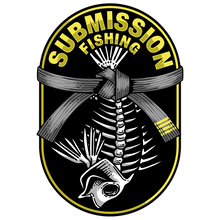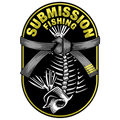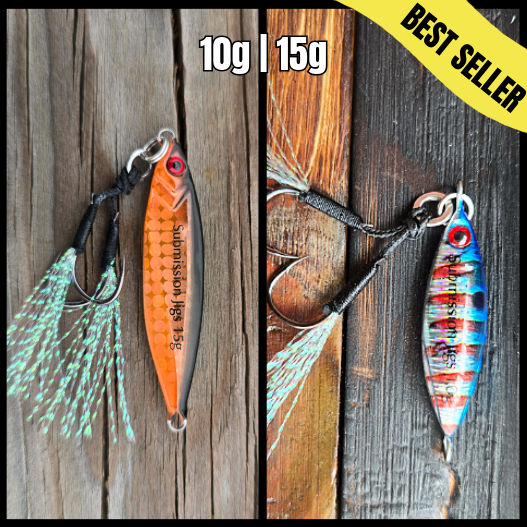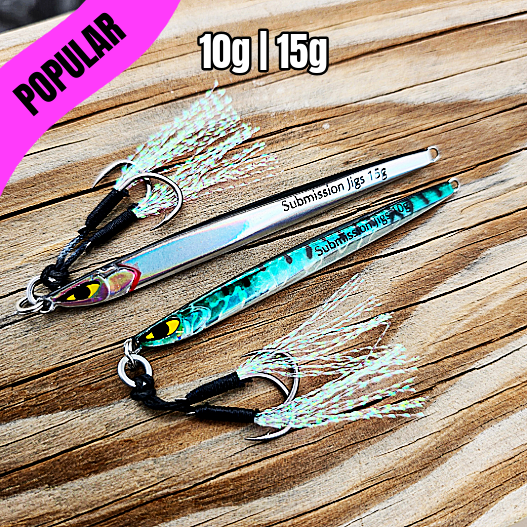Slow Pitch Jigging in Spring: 5 Tips to Catch More Fish 🎣🌱
Slow Pitch Jigging in Spring: 5 Tips to Catch More Fish 🎣🌱
Spring is here, and that means one thing—hungry, active fish ready to feed. As water temperatures rise and baitfish start moving, slow pitch jigging can be deadly effective if you adapt your approach. But spring fishing isn’t always easy. One day, the bite is on fire, and the next, a cold front shuts everything down.
To help you stay on top of the bite this season, here are five essential tips to make the most of your spring slow pitch jigging trips.
1. Target Transition Zones 🌊
Spring is all about movement. Fish that spent the winter hunkered down in deep water are now pushing into shallower feeding grounds. Instead of staying way offshore or over deep structure, focus on drop-offs, ledges, and channels near the shallows—these transition zones are where fish ambush bait as they move through.
How to Find the Right Spots:
✅ Look for depth changes where baitfish gather
✅ Check your sonar for suspended fish—they won’t always be hugging the bottom
✅ Work the water column—start mid-depth and adjust based on activity
Spring fish are on the move, so be ready to move with them.
2. Match the Hatch—But Go Smaller 🐟
Spring means new baitfish hatches, and fish will key in on smaller forage. If you’re throwing big jigs but the fish are feeding on tiny bait, you might get ignored.
Why Downsizing Works in Spring:
✅ Micro slow pitch jigs (10g-30g) imitate small spring baitfish
✅ Lighter colors like natural bait patterns or glow jigs stand out in murkier water
✅ Slower retrieves can keep your jig in the strike zone longer
Smaller, more fluttering jigs like the Micro Mercenary or Sumo can be game-changers in the shallows, especially for spotted bay bass, rockfish, and calicos.
3. Pay Attention to Water Temperature 🌡️
Spring fishing hinges on water temperature. As the water slowly warms, fish become more aggressive, but a cold front can shut them down fast.
How to Adjust Based on Temperature:
✅ Above 55°F – Fish are more active—use a faster jigging cadence
✅ Below 55°F – Fish are sluggish—stick to a slow fall and subtle twitches
✅ After a cold front – Fish often move deeper—use heavier jigs (40g-100g) to keep them in the strike zone
Keep an eye on daily temperature swings—early mornings can be slow, but as the sun warms up the shallows, the bite often picks up.
4. Adjust Jig Weight for Wind & Current 💨
Spring can bring changing conditions—some days are calm and glassy, while others come with strong winds and shifting currents. If your jig isn’t reaching the bottom or staying in the zone, you need to adjust your weight.
How to Choose the Right Jig Weight:
✅ Calm days – Use lighter jigs (20g-50g) for a natural flutter
✅ Windy days or strong current – Go heavier (80g-150g) to stay in control and prevent drifting
✅ Murky water conditions – Glow jigs increase visibility and get more reaction bites
If you’re constantly adjusting for conditions, you’ll stay in the strike zone longer and outfish the competition.
5. Be Ready for Reaction Bites ⚡
In spring, fish often hit out of aggression rather than hunger. If you’re marking fish but not getting bit, it might be time to switch up your presentation and trigger reaction strikes.
How to Trigger More Bites:
✅ Use short, fast lifts to mimic a fleeing baitfish
✅ Pause your jig more often—most strikes happen on the fall
✅ Experiment with colors—sometimes a switch from natural to bright glow can make all the difference
Spring fish are opportunistic feeders—make your jig look like an easy meal, and you’ll get bit.
Final Thoughts: Spring Slow Pitch Jigging = More Action
Spring can be one of the best seasons for slow pitch jigging, but you’ve got to stay flexible and adjust to changing conditions.
✅ Target transition zones where fish are moving
✅ Match the hatch with smaller jigs
✅ Watch water temperature and adapt your technique
✅ Adjust jig weight based on wind and current
✅ Trigger reaction bites with erratic action and pauses
If you’re ready to gear up for spring fishing success, make sure your tackle box is stocked with the right jigs for the job.





